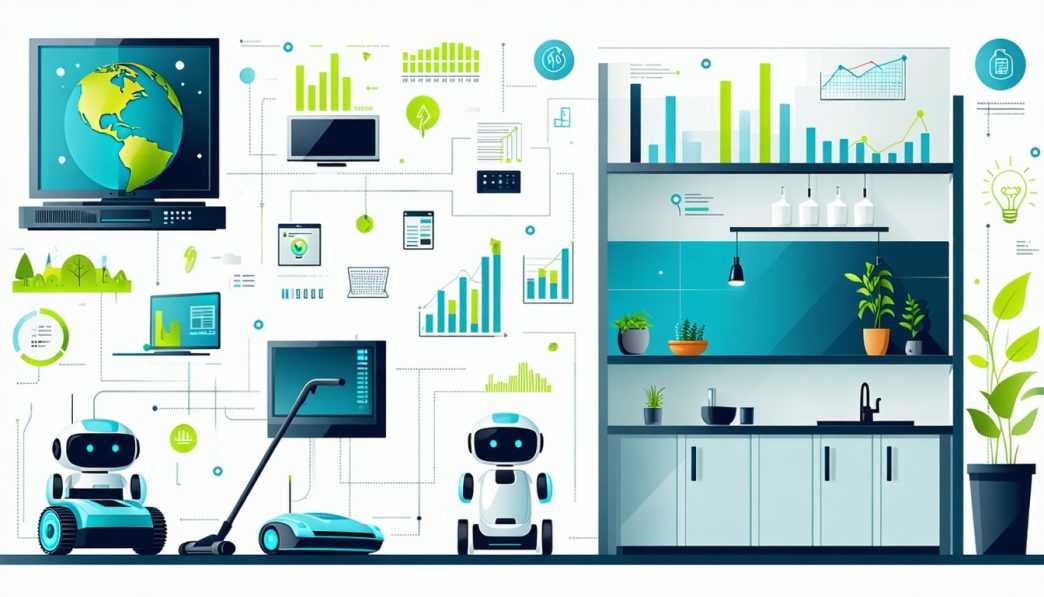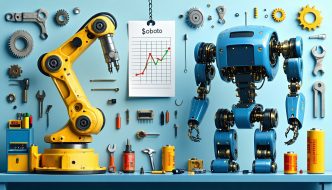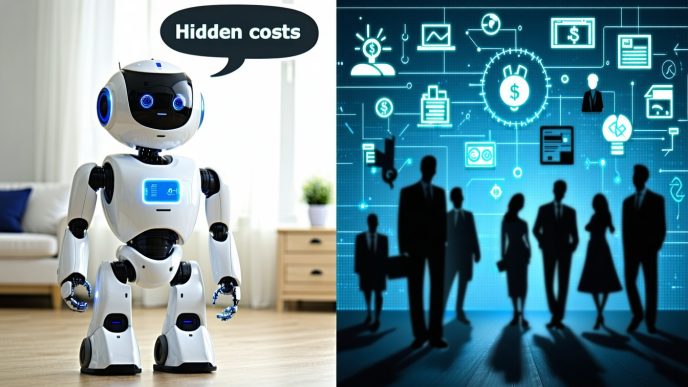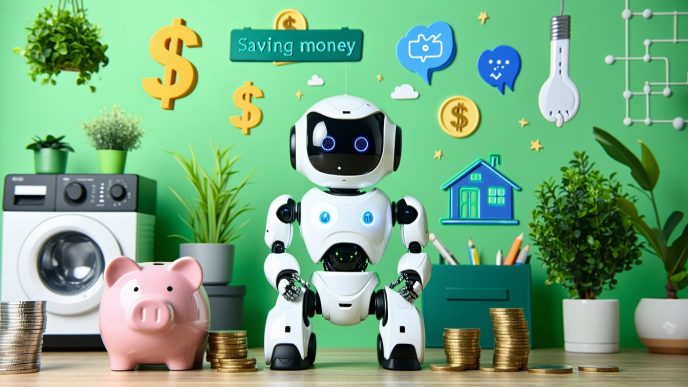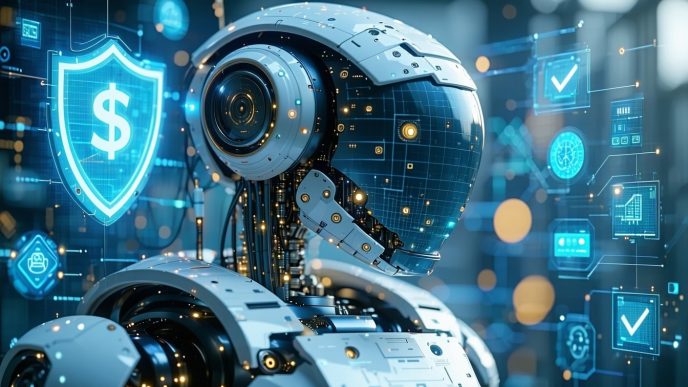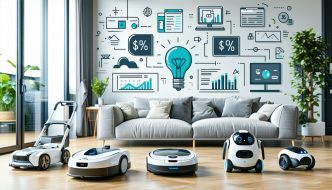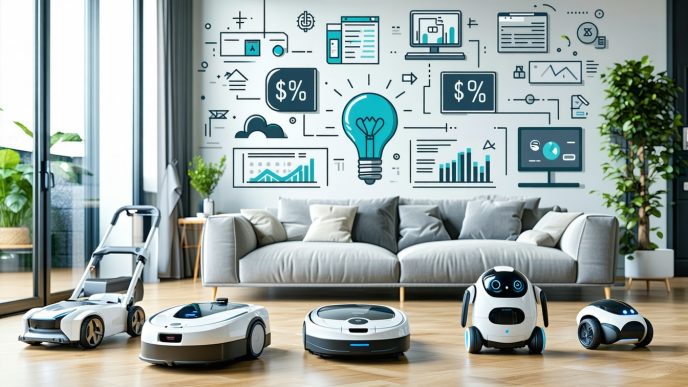Understanding Energy Consumption of Home Robots
Understanding the energy consumption of home robots is critical for prospective buyers. Evaluating energy costs not only helps in assessing the immediate expense of a robot but also allows for a deeper understanding of its long-term financial impact.
Importance of Evaluating Energy Costs
Evaluating the energy costs associated with running home robots is essential for a few reasons. First, it provides a clearer picture of total ownership expenses. Many buyers focus solely on the initial purchase price; however, the ongoing energy consumption can significantly add to total costs over time. For example, while a robot may have an appealing price tag, high energy usage can lead to unexpected expenses in electricity bills.
Estimating the energy costs of running home robots also enables buyers to make informed decisions. By comparing energy usage with other household devices, potential owners can assess the robot’s efficiency and determine if it justifies the investment compared to traditional appliances or services. Here is a simple table comparing estimated energy consumption for various home robots:
| Robot Type | Average Power (Watts) | Estimated Monthly Energy Use (kWh) | Cost per Month (at $0.13/kWh) |
|---|---|---|---|
| Vacuum Robot | 30 | 10 | $1.30 |
| Lawn Mower Robot | 50 | 20 | $2.60 |
| Window Cleaning Robot | 20 | 6 | $0.78 |
Factors Affecting Energy Consumption
Several factors contribute to the energy consumption of home robots. These factors can significantly influence both efficiency and operational costs.
-
Robot Type: Different robots have varying energy demands. For example, a vacuum robot generally uses less energy than a lawn care robot due to the difference in motor power and operation time.
-
Operational Time: The longer a robot operates, the more energy it consumes. Some users may run their robots daily, while others might use them less frequently.
-
Battery Size and Efficiency: The capacity and efficiency of the robot’s battery directly impact energy consumption. A higher-capacity battery can potentially allow for longer operational times without requiring frequent recharging.
-
Cleaning Mode and Features: Many robots come with different modes (e.g., eco mode vs. turbo mode), influencing how much energy is used during operation. Advanced features such as mapping technology and powerful suction typically consume more energy.
-
Environmental Factors: The layout of a user’s home, such as the size and type of flooring, can also affect energy usage. Robots may require more power when navigating obstacles or cleaning dense carpets.
Understanding these factors and their implications can optimize the energy costs of running home robots and contribute to informed purchasing decisions. For further insights into the total cost of ownership, check our article on cost of ownership for home robots.
Calculating Energy Usage
Understanding how to calculate energy usage is crucial for evaluating the overall energy costs of running home robots. This knowledge helps in making informed decisions while considering the long-term expenses associated with robotic appliances.
Watts vs. Kilowatt-Hours
To accurately assess energy consumption, it is important to distinguish between watts and kilowatt-hours (kWh). Watts measure the instantaneous power that an appliance uses, while kilowatt-hours quantify the total energy used over time.
-
Watts (W): Represents the rate of energy consumption at any given moment. For example, a robot vacuum that uses 50 watts operates at that power level while it is on.
-
Kilowatt-Hours (kWh): Represents the energy consumed when applying one kilowatt (1,000 watts) over the period of one hour. It provides a snapshot of energy usage over time.
| Energy Measurement | Definition |
|---|---|
| Watts | Instantaneous power consumption |
| Kilowatt-Hours | Total energy consumed over time |
To convert watts to kilowatt-hours, one can use the formula:
[
\text{Kilowatt-Hours (kWh)} = \frac{\text{Watts (W)} \times \text{Hours Used}}{1000}
]
Estimating Daily Energy Consumption
To estimate the daily energy consumption of home robots, first determine how long the robot operates each day and the wattage rating. Here’s how to do it:
- Identify the wattage of the robot.
- Estimate daily usage in hours.
- Apply the formula:
[
\text{Daily Energy Consumption (kWh)} = \frac{\text{Watts (W)} \times \text{Hours Used}}{1000}
]
For better understanding, below is an example table that shows daily energy consumption for different wattages and usage times.
| Robot Wattage (W) | Daily Usage (Hours) | Daily Energy Consumption (kWh) |
|---|---|---|
| 50 | 2 | 0.1 |
| 100 | 2 | 0.2 |
| 150 | 1 | 0.15 |
| 200 | 2 | 0.4 |
Value-conscious shoppers should also compare these energy costs against potential expenses, such as maintenance fees outlined in our article on robot maintenance costs and battery replacement costs for robots. This comprehensive understanding will help them analyze the total cost of ownership for home robots effectively. For deeper insights, consider exploring additional hidden costs in robot ownership.
Energy Comparison with Common Household Appliances
Understanding the energy costs of running home robots is essential when evaluating their overall value compared to traditional household appliances. In this section, a comparison of robots with commonly used devices like refrigerators, TVs, and laptops will illustrate the difference in energy consumption and costs.
How Robots Compare to Refrigerators
Refrigerators are one of the most energy-consuming appliances in a household. They typically run continuously, using a significant number of kilowatt-hours per year. When comparing this to robots, which are usually operational for shorter periods, the energy consumption is notably lower.
| Appliance | Average Power (Watts) | Monthly Energy Use (kWh) |
|---|---|---|
| Robot (Cleaning) | 30 – 100 | 9 – 30 |
| Refrigerator | 100 – 800 | 30 – 150 |
The monthly energy consumption for a cleaning robot is significantly less than that of a refrigerator, making it a cost-effective option for maintaining home cleanliness.
How Robots Compare to TVs
TVs vary in energy consumption based on type and usage patterns. An average LED TV might consume between 50 to 100 watts during operation. When comparing this to robots, it is essential to look at the operational hours.
| Appliance | Average Power (Watts) | Monthly Energy Use (kWh) |
|---|---|---|
| Robot | 30 – 100 | 9 – 30 |
| LED TV | 50 – 100 | 15 – 30 |
Both robots and TVs have similar ranges in terms of energy consumption, but the total costs can vary based on usage frequency. Therefore, the time spent using the device plays a crucial role in determining energy expenses.
How Robots Compare to Laptops
Laptops often consume less energy than both refrigerators and TVs. On average, a laptop might use around 30 to 100 watts, depending on the model and task.
| Appliance | Average Power (Watts) | Monthly Energy Use (kWh) |
|---|---|---|
| Robot | 30 – 100 | 9 – 30 |
| Laptop | 30 – 100 | 9 – 30 |
This table shows that energy costs for running a robot can be comparable to those of a laptop, making either a reasonable addition to a household from an energy-efficiency standpoint.
In conclusion, when assessing the energy costs tied to home robots, it is clear that they generally consume less power than more traditional household appliances. This comparison not only assists in understanding operational costs but also helps in evaluating the true cost of ownership reflected in utility bills. For more detailed insights on the overall financial implications of owning a robot, explore the article on cost of ownership for home robots.
Tips to Minimize Energy Costs
When evaluating the energy costs of running home robots, first-time buyers and value-conscious shoppers should consider several tips to help reduce long-term expenses. Implementing optimal charging practices, conducting regular maintenance, and utilizing energy-saving features can significantly impact overall energy consumption and costs.
Optimal Charging Practices
Charing robots at the right times can help reduce energy expenses. Here are some best practices:
- Charge During Off-Peak Hours: Electricity rates may be lower during specific hours, often at night. Charging robots during these times can save money.
- Avoid Overcharging: Many robots are designed to stop charging when their batteries are full. However, maintaining the battery at 100% for prolonged periods can wear it down. Keeping the robot at around 80% charged can prolong battery life and optimize energy use.
| Charging Time | Cost Savings (%) |
|---|---|
| Daytime (Peak Hours) | 0-15 |
| Off-Peak Hours | 15-30 |
Conducting Regular Maintenance
Regular maintenance of home robots not only extends their lifespan but also helps them operate efficiently, thus reducing energy usage. Key maintenance strategies include:
- Cleaning Sensors and Brushes: Dirt and hair can hinder a robot’s performance, causing it to work harder and use more energy. Regular cleaning can help maintain optimal performance.
- Replacing Worn Parts: Keeping parts such as brushes and filters in good condition ensures that the robot operates efficiently. Neglecting these can lead to increased energy consumption.
For more detailed information on upkeep, explore our article on robot maintenance costs.
Utilizing Energy-Saving Features
Many modern robots are equipped with energy-saving features that can help reduce power consumption. Key features to look for include:
- Automatic Return to Charging Dock: Robots that automatically return to their charging stations after completing their tasks prevent energy waste.
- Scheduling Options: Setting robots to clean during specific times can take advantage of lower energy rates and avoid peak usage.
- Eco Mode: This function allows robots to operate in a power-efficient manner, which typically uses less energy for everyday cleaning.
| Feature | Potential Energy Savings (%) |
|---|---|
| Automatic Return | 10-15 |
| Scheduling Cleaning Times | 15-25 |
| Eco Mode | 20-30 |
By integrating these tips into their routine, individuals can effectively minimize the energy costs associated with home robots, contributing to better overall cost management and more informed purchasing decisions. For further insight on the financial implications of robot ownership, check our resource on cost of ownership for home robots and explore hidden fees, such as robot software subscription fees and battery replacement costs for robots.
Considering Long-Term Costs
Understanding the true costs of owning home robots involves more than just the initial purchase price. Evaluating energy efficiency ratings and factoring in ongoing energy costs are vital components for first-time buyers, value-conscious shoppers, and tech enthusiasts.
Evaluating Energy Efficiency Ratings
Energy efficiency ratings provide insights into how effectively a robot uses electricity. These ratings help consumers compare various models based on their energy performance, allowing them to choose an option that meets their needs while minimizing energy costs. A higher efficiency rating typically indicates that a robot consumes less energy to perform the same tasks compared to lower-rated models.
| Energy Efficiency Rating | Description |
|---|---|
| A+++ | Most efficient, uses minimal energy |
| A++ | Very efficient, low energy consumption |
| A+ | Moderately efficient, standard energy use |
| A | Average efficiency, higher energy consumption |
Choosing a robot with a higher energy efficiency rating can lead to significant savings on energy bills over time. Additionally, these robots often come with features designed to optimize energy usage, which can further enhance savings. For more information about the energy costs of running home robots, check our dedicated section.
Factoring Energy Costs into Overall Ownership Costs
When considering the total cost of ownership, it is essential to incorporate energy expenditures along with other aspects, such as maintenance, software fees, and potential repairs. This holistic view ensures that consumers understand the complete financial commitment associated with robot ownership. Below is an example table that summarizes potential long-term costs.
| Cost Category | Estimated Yearly Cost |
|---|---|
| Energy Costs (based on average usage) | $50 – $100 |
| Robot Maintenance Costs | $30 – $70 (robot maintenance costs) |
| Software Subscription Fees | $20 – $60 (robot software subscription fees) |
| Battery Replacement Costs | $15 – $30 (battery replacement costs for robots) |
| Repair and Part Replacement Expenses | $25 – $50 (robot repair and part replacement expenses) |
| Extended Warranties (optional) | $40 – $100 (extended warranties for robots) |
Calculating these projected costs can help buyers determine their budget and make informed decisions. Ignoring the potential long-term costs can lead to underestimated expenses, impacting the overall satisfaction with the purchase. Exploring considerations like depreciation of robots over time and hidden costs in robot ownership could further highlight the importance of a comprehensive financial outlook.
By understanding energy efficiency and the various costs associated with ownership, consumers can position themselves to make a more informed decision regarding home robots, ensuring both satisfaction and value for their investment. For tips on saving money on robot ownership, refer to our insights and guidelines.


